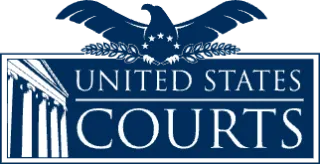This First Amendment activity draws on two Supreme Court precedents and brings them into a contemporary context dealing with banning a social media app used by students while on campus or off campus.
On this page
Hazelwood v. Kuhlmeier (1988) was the first time that the Supreme Court of the United States dealt with the tensions between school authority to control student speech on a school platform. It was followed by the Court’s decision in Mahanoy Area School District v. B.L. (2021) that dealt with off-campus student speech on social media. This activity asks students to balance First Amendment free speech rights with the interest of schools to maintain an orderly learning environment.
What's Different About This Activity?
- Contemporary Social Media Tensions
- Landmark Cases with a Relatable Fictional Scenario
- Court Simulation – Not a Mock Trial
- Every Learning Style is Involved
- Centerpiece is Jury Deliberations
How to Use These Resources
Start by downloading the agenda and activity package (docx), which contains all directions, activities, quizzes, and material needed for this activity.
Roles in the Simulation
- One Presiding Judge
- Two to Four Student Judges – They sit on the bench with the presiding judge and ask questions of the student judges.
- One Facilitator – The facilitator, a volunteer attorney, guides the jury deliberations.
- Six Attorney Volunteers – Ideally, four attorney coaches assist the student attorney teams – two assist the team representing the school; two assist the team representing the student. Two attorney discussion leaders prepare the student jurors for the activity.
- Four Student Attorneys – Two students represent each side.
- Student Jurors – All other students serve as jurors who deliberate and come to a show-of-hands verdict. Due to time constraints the verdict does not have to be unanimous.
What Happens During This Activity
- In the courtroom, in advance of the activity, a teacher chooses four students who volunteer to be attorneys for each side: Two student attorneys represent the school and two represent the student. All remaining students serve as jurors.
All participants review the agenda (docx), take the reality check quiz (docx) and the media literacy quiz (docx), and read the fictional scenario (docx) for the arguments.
- In breakout rooms, the student attorneys work with their attorney coaches to review the opening protocol and talking points (docx) as a guide for building their arguments. The student attorneys deliver the closing arguments for each side.
In the courtroom, the facilitator engages the student jurors in conversation about the case using the student jury preparation exercise and answer key (docx) to help them identify arguments that might be made by each side.
- In the courtroom, the four student attorneys present their arguments, and the judge and student judges who may be on the bench ask questions as they argue.
- After the closing arguments are presented by both sides, the students jurors deliberate in open court. The facilitator moderates the arguments to ensure that everyone has the opportunity to speak. Otherwise, the jurors explore the issues together with guidance until the facilitator brings the deliberations to a close. Because of time constraints, the verdict does not have to be unanimous.
The presiding judge and student judges, attorney coaches, and student attorneys watch as the jurors debate in open court.
